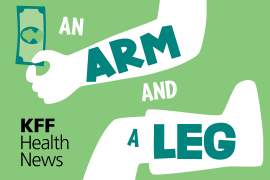If you’re expecting, you might want to do some homework before choosing the hospital where you’ll have your baby. According to a report released Thursday, most hospitals overuse some medical interventions that can create health risks for both mother and child, while falling short in meeting other safety standards.
The report comes from the Leapfrog Group, a nonprofit organization that rates hospitals and emphasizes patient safety, working in conjunction with San Francisco-based Castlight Health, a company that compares quality and price among health care providers.
Researchers surveyed 1,750 hospitals, or about 46 percent of hospitals across the country, and rated them in four areas to gauge how safe women are when giving birth. Leapfrog’s maternity care expert panel devised the nationally standardized metrics, which outside experts also said aligned with reasonable best practices.
About 60 percent of hospitals give too many women cesarean sections, Leapfrog found. That meant hospitals performed the procedure on more than 24 percent of low-risk new mothers, exceeding the federal recommendations that Leapfrog’s panel used to determine its standard. Meanwhile, almost 7 in 10 hospitals used episiotomies — a surgery that widens birth canals — for more than 5 percent of women, the maximum amount the expert panel deemed reasonable. That’s also contrary to recommended best practices against the procedure’s routine use. And just under 80 percent didn’t have clinicians practiced in delivering babies who weigh less than 3.5 pounds.
For expectant mothers, “this can be a cause of concern,” said Erica Mobley, a spokeswoman for Leapfrog. For instance, “If you are looking at a few different hospitals, and one or two have a high risk of C-section, you are at a greater risk of having a C-section when it may not be needed.”
That matters. Public health advocates have noted the number of women opting for unnecessary C-sections is climbing — a trend that poses risks for both mothers and children. Almost 1 in 3 women had C-sections in 2014, most of which experts say would not be considered medically necessary. (2014 is the most recent year for which the Centers for Disease Control and Prevention has data.) That’s compared with about 20 percent in 1990. For particularly risky pregnancies, the surgery can be helpful, but it also exposes mothers to the risk of infection and blood loss, and puts children at risk for chronic illnesses.
“This is a major surgery,” said Terrie Inder, a neonatologist who chairs the department of pediatric newborn medicine at Boston-based Brigham and Women’s Hospital. “I do think there is a gap in knowledge.”
The report did highlight some positives. Far fewer hospitals — 16 percent — are choosing to deliver babies before they’ve reached 39 weeks, a practice that doctors say can increase risks to a baby’s health. Six years ago, 17 percent of babies were delivered before this point, though doing so wasn’t medically necessary. That number’s now shrunk to about 3 percent.
Meanwhile, where women go for care can have a marked impact on that care’s quality, the Leapfrog report notes. Even within the same city, one hospital may be five times as likely as another to deliver C-sections. That variance also means women can shop around to find the hospital most likely to take good care of them, Mobley said.
“What is great about maternity care is it is truly a shoppable health care service,” Mobley said. “You have nine months or a little less to think about where you want to give birth.”
But that assumes someone’s insurance plan includes hospitals with low rates of C-sections or episiotomies. That, Mobley acknowledged, isn’t always the case — though she added that insurance companies should consider these kinds of quality metrics when deciding which hospitals to include in their networks.
Some are starting to. Covered California, the state’s health insurance exchange, announced in April that future plans won’t include hospitals that fail to meet the federal guidelines for C-section rates.
There are also other efforts underway to curb unnecessary C-sections, noted Katy Kozhimannil, an associate professor of health policy and management at the University of Minnesota, who specializes in women’s health.
Historically, hospitals have been paid much more for the surgeries than for traditional vaginal birth. Payers are starting to shift away from that, she said.
At the same time, Mobley said, regulations shouldn’t go so far as to keep people from getting procedures that could help. That’s a real concern, argued Helen Haskell, a patient safety advocate.
Curbing unnecessary surgeries matters, she said, but “the only problem is nobody is measuring the consequences of that. So you don’t really know if you’re causing harm — If there are people not getting C-sections who should be.”
The Leapfrog report highlights other concerns. Women with high-risk pregnancies don’t always have options for getting the best treatment. In Missouri, for instance, none of the hospitals responding to the survey met the expert panel’s standard for taking good care of women in this category. That’s not true in Massachusetts or Ohio, where between 30 and 50 percent of hospitals did meet the expert panel’s standards. And that access problem is exacerbated in rural areas, Kozhimannil noted, where it’s harder for women to get to the best facilities.
But there is widespread interest in addressing those gaps, she said.
“Some of the risks women are facing are issues that, as a health care delivery system, we can reduce,” she said. “There are many great clinicians working to make sure that experience is better and safer for more women.”







